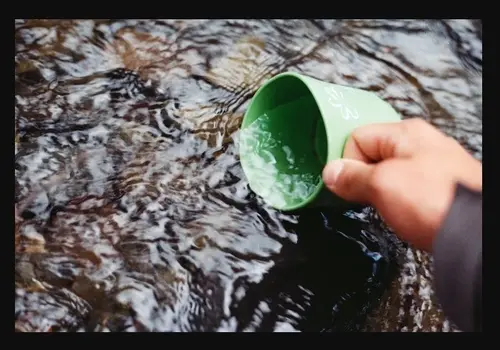Camp Lejeune, a military stronghold on the coast of Jacksonville, North Carolina, has been marred by a dark legacy of water contamination. Between the 1950s and 1987, an estimated one million people faced exposure to harmful chemicals, resulting in grave health repercussions.
This contamination arose from a combination of on-base mishaps and off-base negligence in handling hazardous substances. In this article,
Camp Lejeune: A Military Hub on Troubled Waters
Established in 1942, Camp Lejeune stands as a comprehensive military installation housing Marine Corps, Navy, and Coast Guard commands. It has various camps, including housing, training facilities, and the New River Air Station.

The base has played a critical role in shaping military strategies, acting as a key training ground for generations of Marines. Beyond its strategic significance, the base holds a place in history as a melting pot of military expertise and shared experiences.
The Water Contamination Crisis
According to ConsumerNotice.org, the Marine Corps uncovered alarming contamination in the base’s water supply in 1982, attributing it to volatile organic compounds (VOCs). Trichloroethylene (TCE), perchloroethylene (PCE), benzene, and vinyl chloride were identified as culprits, posing severe health risks.
The revelation sent shockwaves through the community, as residents grappled with the realization that the water they had been consuming contained hazardous substances. This unsettling revelation prompted immediate action, sparking investigations into the extent of the contamination and its potential long-term consequences.
Health Conditions Linked to Contamination
Rigorous research conducted by the ATSDR has established a clear link between Camp Lejeune’s water contamination and numerous health issues. These include cancer, birth defects, and neurological disorders.
These studies have revealed correlations between the exposure with mood effects such as anxiety and depression. This has underscored the full impact of the toxic exposure. The toll extends beyond the physical realm, emphasizing the urgent need for comprehensive support systems and healthcare resources for the victims.
Causes of Contamination
According to Chemistry World, Camp Lejeune’s contamination emerged from a combination of on-base incidents and an off-base dry cleaner with improper waste disposal practices. The contamination significantly impacted the Tarawa Terrace treatment plant.
On-base spills and underground storage leaks were primary contributors to the pollution at Hadnot Point, another water treatment facility. The pervasive contamination underscored the complex interplay between on-site activities and external factors, magnifying the challenges in containing and rectifying the situation.
Safety Measures and Legislation
Although the water is now deemed safe, the government responded to the crisis with legislative measures such as the Camp Lejeune Justice Act. State laws mandate regular water testing and disclosure of results, ensuring ongoing vigilance in safeguarding water quality.
These measures not only seek to rectify past negligence but also serve as a blueprint for preventing similar environmental hazards on military bases nationwide. TorHoerman Law notes that the CLJA, in particular, reflects a commitment to transparency and accountability by allowing affected individuals to pursue justice.
Camp Lejeune Lawsuits and Settlements
In the wake of the crisis, a wave of Camp Lejeune lawsuits emerged, with over a thousand cases pending as of July 2023. The Honoring Our PACT Act of 2022 and the Camp Lejeune Justice Act offer a legal pathway for affected individuals to seek compensation.
However, settlements remain a topic of debate, with complexities surrounding eligibility criteria. As these legal battles unfold, their outcomes will not only shape the lives of those seeking justice but will also set crucial precedents.
In addition, the Camp Lejeune settlement amounts are also unclear as of now. This is because the potential financial repercussions are substantial, with estimates suggesting the minimum Camp Lejeune settlement could be $10 million. According to CNN, another estimate by the Congressional Budget Office talks about $163 billion in settlements.
The potential for compensation, coupled with the broader implications for military accountability, underscores the significance of these ongoing legal proceedings.
Looking Ahead With The Elective Option Framework
In a significant development this year the Navy has introduced the Elective Option framework, offering a potential medium for resolution. This framework outlines settlements based on specific illnesses and exposure durations for individuals affected by Camp Lejeune’s water contamination.
As claimants grapple with the complexities of this framework, it stands as a unique opportunity for them to seek compensation.
However, navigating the Elective Option comes with its challenges, notably the stringent eligibility criteria and the demanding task of proving qualifying injuries. The complexity of this process adds layers to the ongoing journey for justice and compensation for those adversely impacted by the water contamination.
In summary, the Camp Lejeune water contamination underscores the profound impact of environmental negligence on a military community. Ongoing legal battles and compensation frameworks are shaping the landscape of accountability.
The complex interplay of on-base incidents and external factors highlights the challenges in addressing such crises, while the Elective Option offers a potential resolution. This case will continue to serve as a reminder of the need for ongoing vigilance to safeguard military installations and their residents.
